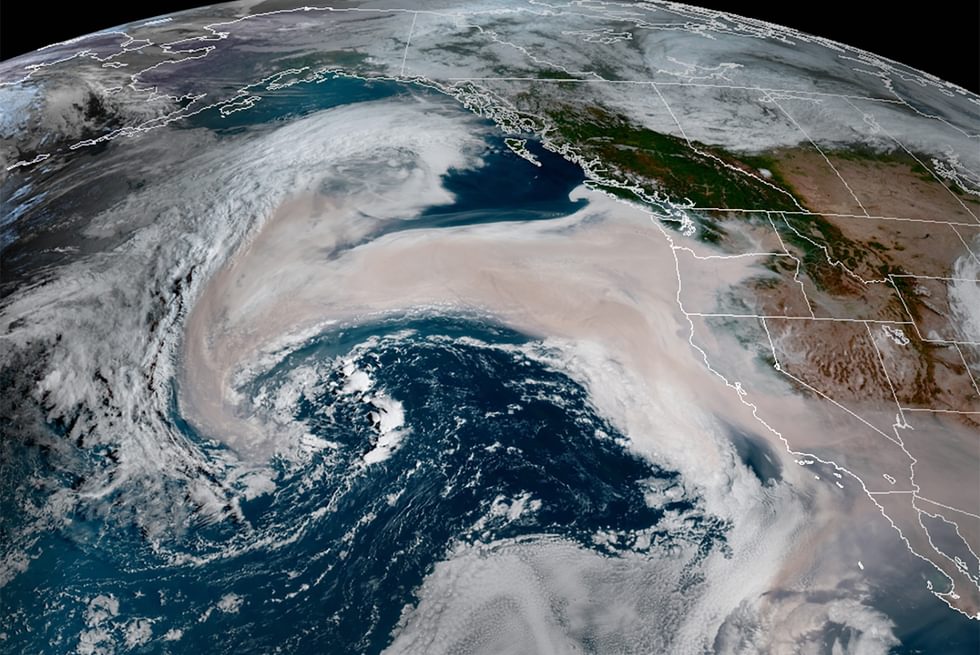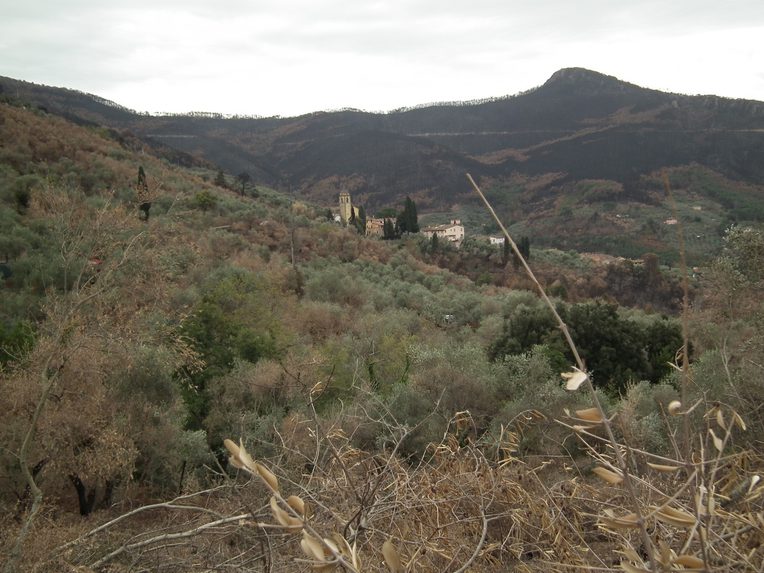Wildfires and Ghosts: Pathogen Epidemics and Agricultural Abandonment in Italy
From the Series: Firestorm: Critical Approaches to Forest Death and Life
From the Series: Firestorm: Critical Approaches to Forest Death and Life

In Italy, as across the Mediterranean, wildfires have become larger, more intense, and more dangerous. In Portugal in 2017 and in Greece in 2018, homes burned and people were killed. Media accounts give varying reasons for such fires, ranging from criminality and official indifference to climate change. Oral and landscape history tell a more complicated story. Contemporary fires emerge in the wake of histories of plant disease and agricultural abandonment, of longer term histories of human fire use, and of deep time histories of plant evolution. Burning forests are linked not only to the present disaster of climate change but to legacies of care and abandonment. In the Monte Pisano of central Italy, industrialization and imperial trade networks have left ghostly presences that make the landscape more flammable.
A deep time perspective shows that fires emerge at the intersections of biogeochemical processes, plant evolution, land use history, and climate change. Plants gave us the oxygen-rich atmosphere that allows vegetation to burn in the first place. As historian Steven J. Pyne (1997, 16–17) points out, whenever we think of fire as strange and abnormal, we ignore the reality that wherever there is vegetation, sooner or later there will likely be fire.
Evolutionary adaptations to surviving, resisting, or reproducing in the wake of fire are visible in plant morphologies and reproductive strategies. In the Mediterranean, human use of fire altered species compositions and vegetation structure over the last ten thousand years. In many places, fire regimes of frequent, smaller scale, and less intense fires took hold, resulting in a frequently burned but less flammable landscape. A pivotal moment in rendering landscapes more fire prone was the post–World War II Great Acceleration, which drew peasants out of the countryside and into urban industrial jobs. It is the abandonment of traditional practices of leaf litter raking, firewood cutting, and pastoral burning that has set the stage for contemporary fires.
In the Monte Pisano, millennia of pastoralism and agriculture eliminated fire-sensitive beech, lime, and fir, favoring fire-resistant oaks and fire-dependent pines. Firewood cutting and burning by peasant farmers and pastoralists produced a landscape that was relatively fire resilient, where fires were usually small and controllable. Forests and fields were kept clean of fuel. Controlled burning by shepherds kept grasses short and produced natural firebreaks on the crest of the mountains. From the early middle ages, cultivated chestnut groves provided food, fuel. and fodder. In the nineteenth century, imperial trade networks brought Chinese and Japanese chestnut varieties to Europe, introducing invasive pathogens. In 1860s and 1930s, successive pathogen epidemics destroyed low-elevation chestnut groves. Charred chestnut stumps in fire blasted pine forests are ghostly reminders of these carefully tended chestnut groves. The shift from chestnut to pine marked a transition to a more fire-prone landscape, a propensity that was kept in check only by peasant practices of litter raking and firewood gathering.
While the Italian state was aggressively opposed to agropastoral fire from the late nineteenth century onward, and especially during the Fascist regime of Benito Mussolini (1923–1943), it was only with urbanization and agricultural abandonment in the 1960s that traditional low intensity and small-scale fires were replaced by large wildfires. With the abandonment of grazing, leaf-litter raking and firewood cutting, pine forests have become choked with dry vegetation, pastures have been colonized by trees, and fires have become ever larger and more intense. Forests have shifted in composition from less flammable oak and chestnut, often with open grassy areas, to drastically more fire-prone pine and macchia (Mediterranean scrub). Each successive fire encourages the regeneration of fire-adapted species, leaving an ever more flammable landscape in its wake. Fires are made more likely by human abandonment.

Recent disastrous fires have made people in this region intensely aware of the effects of landscape abandonment. In the fall of 2018 a wildfire burned 1,400 hectares of forests and olive terraces, destroying seven homes, and threatening a historic monastery. In the wake of this disaster, an effervescence of political and social action inspired volunteers to repair burned slopes and stabilize river beds, with the aim of preventing landslides. A new organization, the Comunità del Bosco was founded in 2018, with the goal of reintroducing landscape care that could partially address legacies of agricultural abandonment. A range of projects have ensued, from creating firebreaks around homes, to thinning forests and replacing fire prone pines with other species. Although controlled burning experiments on the crest of the mountains show promise, prescribed burning remains an almost unknown concept. The legacy of state fire suppression has created intense stigma around fire use, and traditions of prescribed burning in fields (to reduce stubble) and in mountain pastures (to produce grass for sheep and goats) have little contemporary echo. Nevertheless, the positive effects of grazing are remembered. Some homeowners are bringing back sheep to graze on their olive terraces, with the goal of reducing fire risk.
In such profoundly human-modified landscapes, climate change is a less immediate source of fire risk than changing land use. In many other parts of the world, as in Italy, widespread land abandonment can give rise to increasing fire risk. We may need to bring back human care to make such landscapes less fire prone. Histories of peasant or indigenous landscape care can inform present day efforts to produce less flammable landscapes, even as climate change is likely to bring intense fires that exceed past experience. The ghosts of peasant or indigenous practices of litter raking, burning, and tending trees are material traces in the present day landscape, as are the ghosts of disease epidemics, agricultural abandonment, and industrialization. Such ghosts can give us pause for reflection, they can help us imagine new forms of landscape care, from new forms of fire, to new kinds of cultivation, even as we recognize that the future will not be like the past.
Pyne, Stephen J. 1997. Vestal Fire: An Environmental History, Told through Fire, of Europe and Europe’s Encounter with the World. Seattle: University of Washington Press.